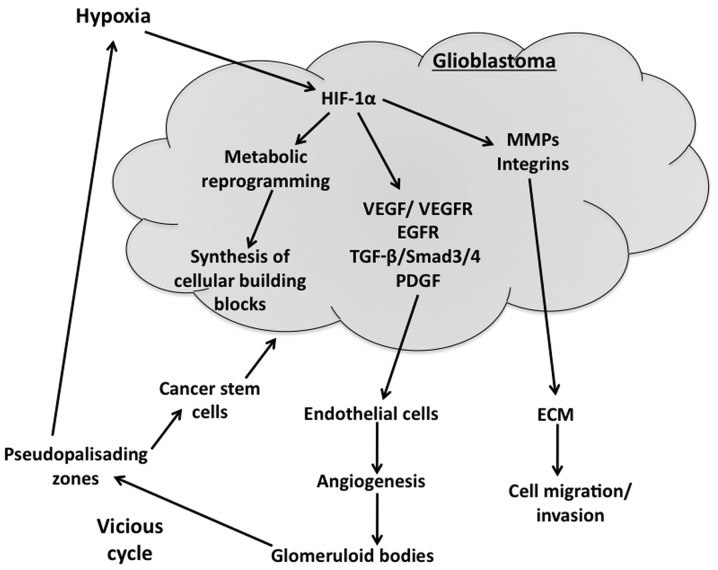Figure 1.
Hypoxia-driven events contribute to glioblastoma progression. Hypoxia stabilizes hypoxia-inducible factor-1α (HIF-1α) in glioblastoma cells, thereby elevating the transcription of HIF-1α targets. The major tumor-promoting targets of HIF-1α are: Vascular endothelial growth factor (VEGF), VEGF receptor (VEGFR), epidermal growth factor receptor (EGFR), transforming growth factor-β (TGF-β), plate-derived growth factor (PDGF), matrix metalloproteases (MMPs) and integrins. MMPs and integrins facilitate the migration of cancer cells through the extracellular matrix (ECM). VEGF, VEGFR and EGFR promote angiogenesis which leads to malfunctional glomeruloid vessel bodies. These malfunctional vessels lead to areas of pseudopalisading necrotic regions that are hypoxic and protect cancer stem cells, which further proliferate and lead to tumor expansion.

